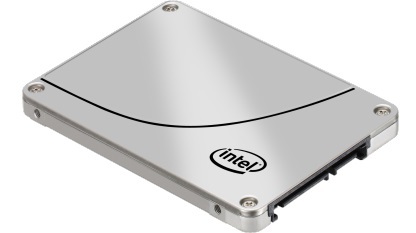Competition in the global solid-state drive market is heating up as more players are rolling out the storage system built on technology that stacks cells vertically.
An SSD is lighter and more compact than a conventional hard disk drive. It also boasts shorter booting time and faster reading and writing speeds than an HDD.
 |
Intel’s solid-state drive product (Intel) |
Intel recently rolled out a new SSD lineup based on 3-D NAND flash memory in Seoul, home turf of Samsung Electronics, the largest SSD manufacturer by sales in the world.
David Lundell, director of Intel’s client SSD strategic planning and product marketing division, said at a press meeting last week that the U.S. chip powerhouse would up the ante in the SSD business in a bid to catch up with Samsung.
“Intel invested 6 trillion won ($5.2 billion) in Dalian, China in October last year to turn a semiconductor factory into one that produces storage systems (SSDs),” said the marketing director, adding that the U.S. chip company would run full throttle to take the lead in the burgeoning SSD market.
The 3-D NAND flash memory chips incorporated in Intel’s newly released SSDs have 32 layers of cells, considered the second generation of its kind.
Samsung, which introduced the world’s first SSD with 3-D chip stacking technology in 2013, is producing third-generation SSDs boasting 48 layers of cells.
Enjoying first-mover advantage, Seoul-based Samsung currently remains an unparalleled market leader with a 38 percent market share by sales, outrunning No. 2 Intel by 24 percentage points in 2015, according to market research firm IHS.
Samsung earned $5.4 billion last year, up from $4 billion the year before, while Intel’s revenue for its SSD business stood at $1.9 billion.
SanDisk, Micron and Toshiba follow the two, capturing 10 percent, 6 percent and 5 percent of market share, respectively.
SK hynix, the world’s second-largest DRAM maker by sales, has also ratcheted up its efforts to increase its footing in the SSD segment. It released its first 3-D NAND SSD products in Shenzhen, China last week, which according to the firm can read a 2-gigabyte, or two-hour long, movie file in one second. The SK Group affiliate took 11th place with 2 percent market share last year.
IHS forecast that the world’s SSD market will grow from $14.1 billion in 2015 to $18.8 billion in 2020.
By Kim Young-won (
wone0102@heraldcorp.com)








